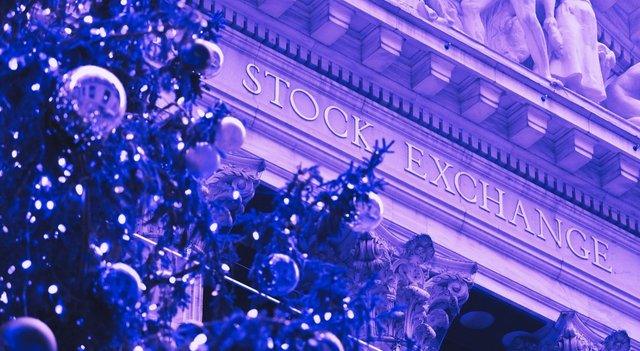The major U.S. index futures are currently pointing to a roughly flat open on Monday, with stocks likely to show a lack of direction following the strong upward move seen last Friday.
Traders may be reluctant to make significant moves amid what is likely to be a relatively quiet week due to the Christmas Day holiday on Wednesday.
The markets are also scheduled to close earlier than usual for Christmas Eve on Tuesday, leading to below average trading activity.
Uncertainty about the near-term outlook for the markets may also keep some traders on the sidelines following the volatility seen last week.
The economic calendar for the week is also relatively quiet, although reports on durable goods orders, new home sales and weekly jobless claims may still attract attention.
After ending Thursday’s session little changed, stocks moved sharply higher over the course of the trading day on Friday. The major averages recovered from initial weakness and climbed firmly into positive territory as the day progressed.
The Dow surged 498.02 points or 1.2 percent to 42,840.26, adding to the slim gain posted in Thursday’s session, when the blue chip index snapped a ten-day losing streak.
The tech-heavy Nasdaq also jumped 199.83 points or 1.0 percent to 19,572.60 and the S&P 500 shot up 63.77 points or 1.1 percent to 5,930.85.
Despite the strong upward move on the day, the major averages posted notable losses for the week. The Dow plunged by 2.3 percent, the S&P 500 tumbled by 2.0 percent and the Nasdaq slumped by 1.8 percent.
The rally that emerged on Wall Street came as traders reacted to the release of the Federal Reserve’s preferred readings on consumer price inflation.
The Commerce Department said its personal consumption expenditures (PCE) price index inched up by 0.1 percent in November after rising by 0.2 percent in October. Economists had expected prices to increase by another 0.2 percent.
The annual rate of growth by the PCE price index accelerated to 2.4 percent in November from 2.3 percent in October, slightly slower than the 2.5 percent jump economists had expected.
Excluding food and energy prices, the core PCE price index also edged up by 0.1 percent in November after climbing by 0.3 percent in October. Economists had expected core prices to rise by 0.2 percent.
The annual rate of growth by the core PCE price index in November came in at 2.8 percent, unchanged from October, while economists had expected an acceleration to 2.9 percent.
The slower than expected annual rates of growth seemingly inspired traders to pick up stocks at relatively reduced levels following the mid-week sell-off.
Stocks plummeted on Wednesday after the Fed forecast fewer than previously estimated interest rate cuts next year amid lingering concerns about sticky inflation.
Chicago Fed President Austan Goolsbee told CNBC’s Steve Liesman he’s hopeful the data suggests “the couple of months of firming were more of a bump than a change in path.”
Meanwhile, traders largely shrugged off concerns about a potential U.S. government shutdown, potentially reflecting optimism lawmakers will reach a last-minute deal, as turned out to be the case.
Banking stocks showed a significant move back to the upside, with the KBW Bank Index jumping by 2.0 percent after ending Thursday’s session at its lowest closing level in over a month.
Considerable strength was also visible among interest rate-sensitive commercial real estate stocks, as reflected by the 1.8 percent gain posted by the Dow Jones U.S. Real Estate Index.
Interest rate-sensitive utilities stocks also regained ground, driving the Dow Jones Utility Average up by 1.5 percent on the day.
Gold, brokerage and semiconductor stocks also saw notable strength on the day, moving higher along with most of the other major sectors.
